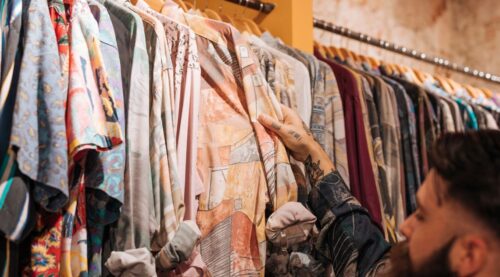Table of Contents

In today’s tricky world of luxury fashion, a notable shift is underway among the younger demographic. Those born between 1997 and 2012, that we label as Generation Z (Gen Z), are saying no to new high-end purchases in favour of exploring the second-hand luxury goods market. With this in mind, we set BoltChatAI on a journey to decode and understand the motivations and preferences that are fuelling this emerging trend.
Objective
So, what exactly were we looking to do? Our primary aim was to delve into the reasons why younger consumers are turning away from brand-new luxury items and are instead embracing the second-hand luxury market. Our investigation sought to unravel how the blend of sustainability, affordability and the charm of finding a unique vintage piece are pushing Gen Z to second-hand luxury, establishing why it is not just an alternative, but a preferred choice for this demographic.
Methodology and Audience
Utilising our AI Moderator’s structured chat guide, our research was carried out through targeted surveys and detailed interviews with Gen Z consumers aged 18 to 25 in the UK. These participants were selected based on their purchasing habits, including their preference for new versus second-hand luxury goods. The insights gathered offer a detailed perspective on current trends and consumer behaviour in the luxury shopping domain.
Financial Prudence, Sustainability, and the Allure of Accessibility
The growing drive towards second-hand luxury goods is primarily driven by economic considerations. Young consumers find these items more budget-friendly, providing them access to luxury without the steep price tags associated with new products. This trend is further bolstered by the opportunity to acquire rare vintage or limited-edition items that aren’t available in the mainstream luxury market. A unique find at a good price is a winner for Gen Z!
Sustainability is another key factor influencing Gen Z’s shopping choices. These younger consumers are keen on minimising their environmental impact, opting for second-hand luxury goods as a greener alternative to new purchases, going against the world of ‘fast fashion’. However, factors like design, quality and price can sometimes overshadow eco-friendly considerations, highlighting a complex balance between sustainability desires and purchasing decisions.
Going Digital
Platforms like Vinted, Vestiaire Collective and Depop, known for their authenticity checks and user-friendly policies, are crucial to the popularity of the second-hand market. These apps give them a whole market at the touch of a button…or screen. Social media and influencer endorsements on platforms such as Instagram and TikTok, partnered with promotions from online personalities, significantly impact purchasing decisions, enhancing interest in second-hand luxury. Influencers hold the power for Gen Z that mainstream celebrities have for other generations.
Although many report they are highly satisfied with their second-hand luxury purchases, there are still concerns about fraud and counterfeit items can turn some customers away. This underlines the importance of robust authentication processes and educating consumers on identifying legitimate sources. Better safe than sorry.
The Future of Second-Hand
The shift towards second-hand luxury purchases reflects broader changes in consumer behaviour and preferences. Luxury brands must adapt by integrating more sustainable practices, offering competitive pricing and possibly exploring certified pre-owned options. Tech giant Apple offer ‘certified refurbished’ products, making their products more accessible at reduced prices. Luxury brands could also introduce something similar.
The high cost of new luxury goods, compounded by economic pressures, is driving young consumers towards the second-hand market. Our respondents indicated that more competitive pricing could potentially lure them back to purchasing new items. Our exploration into the motivations and behaviours of Gen Z shoppers underscores the increasing importance of the second-hand luxury market and suggests ways for traditional luxury brands to innovate and respond to these evolving consumer needs.
Feel like learning more about Gen Z’s perceptions of the second-hand luxury market? Check out our full report here! Keen to find out more about BoltChatAI and how it can deliver actionable insights for your business? Click that ‘Book A Demo’ button in the top right corner and let’s see how we can help!






